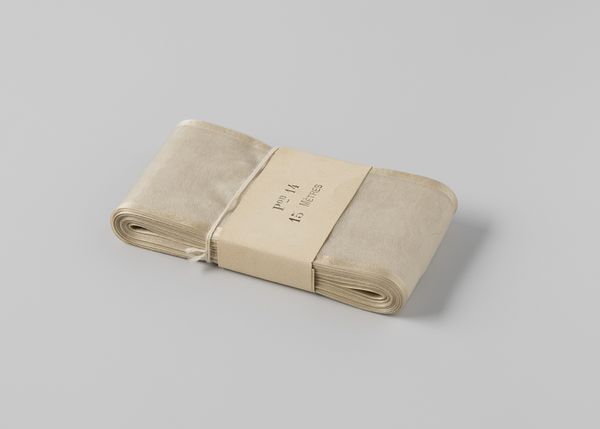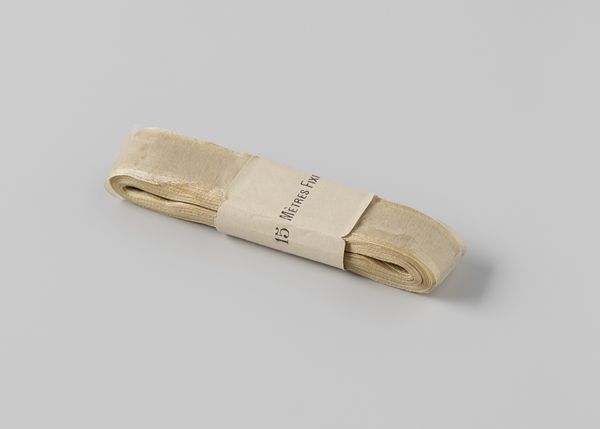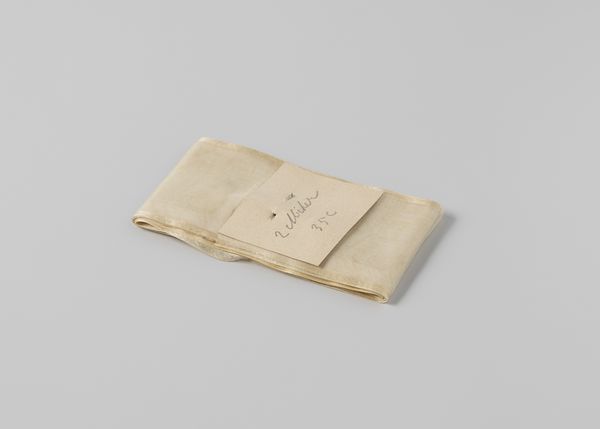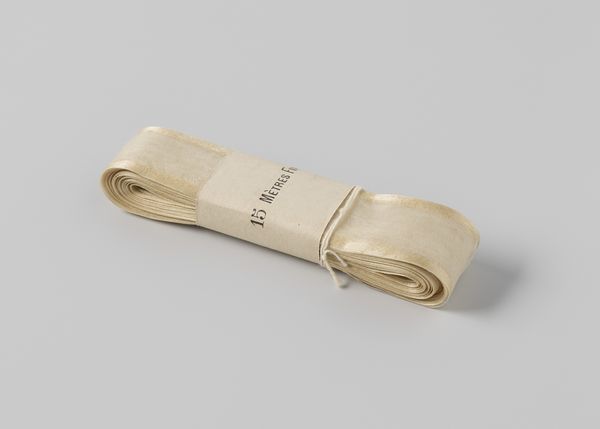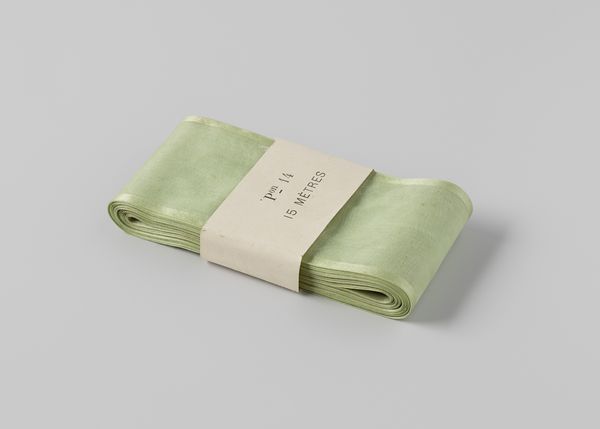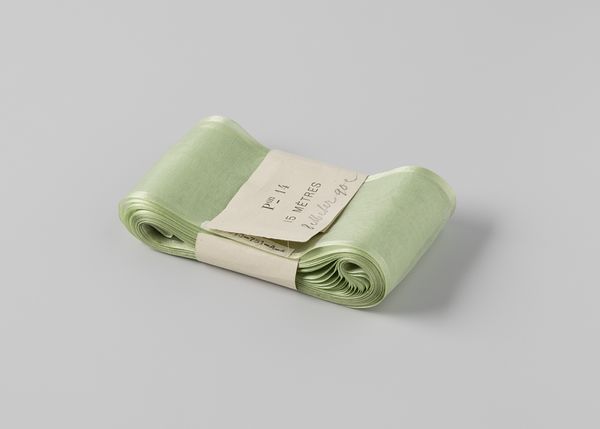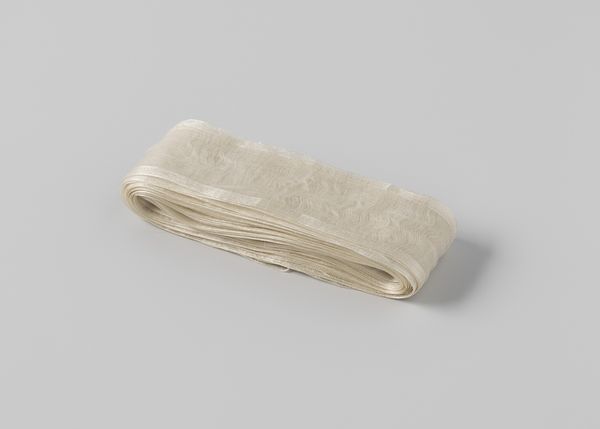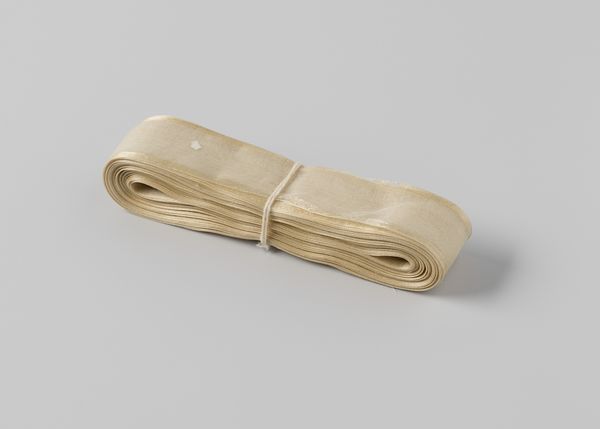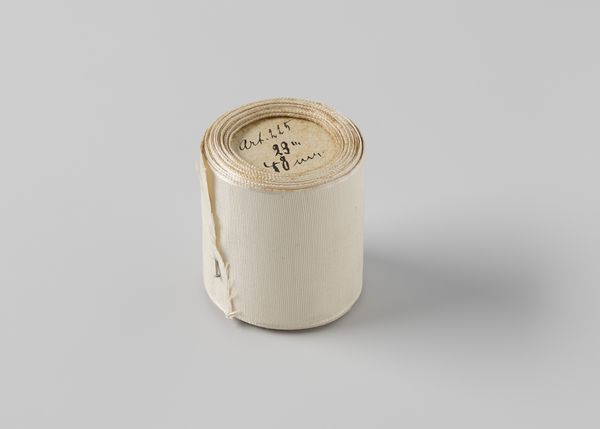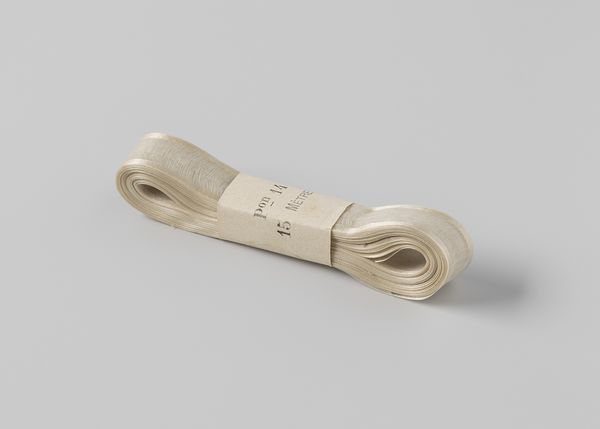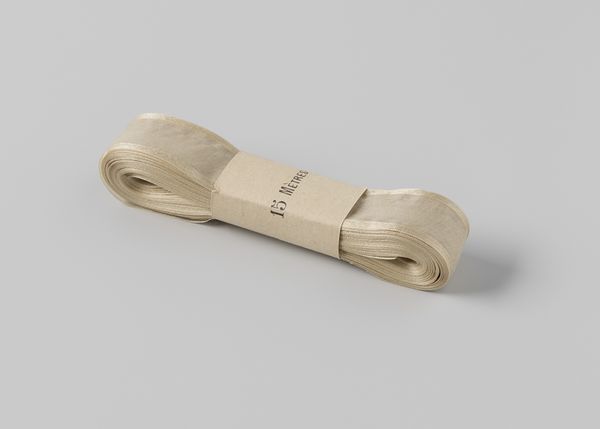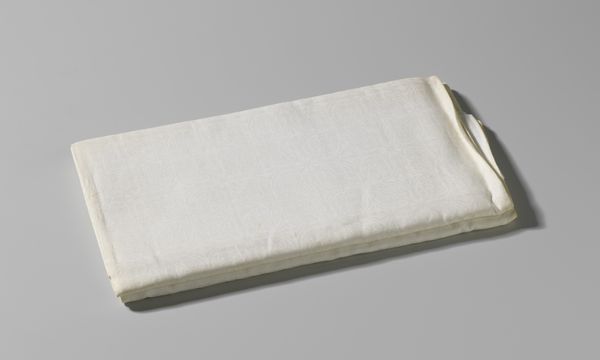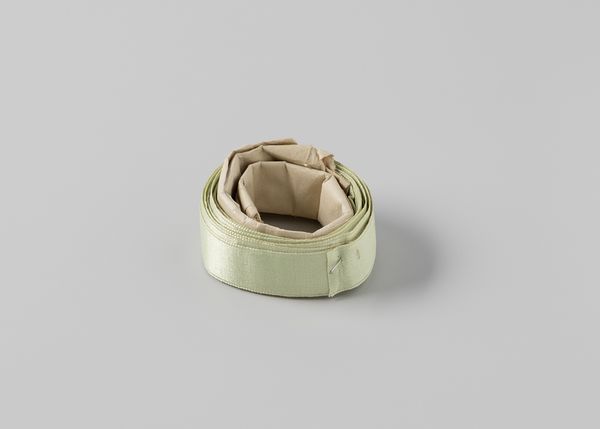
photography
#
photography
#
modernism
Dimensions: length 600 cm, width 5.5 cm, height 1.8 cm, length 12 cm
Copyright: Rijks Museum: Open Domain
Curator: This image presents us with a photograph titled "Lint van crèmekleurig gaas van 6 meter", taken between 1900 and 1915, currently residing in the Rijksmuseum. It depicts, rather straightforwardly, a roll of cream-colored gauze ribbon. Editor: My immediate impression is one of subdued elegance. The restrained palette and simple composition evoke a sense of quiet luxury and old-world charm, before the Great War swept so much away. Curator: Precisely. Consider the interplay of light and shadow on the delicate fabric. The subtle variations in tone create depth and texture, transforming what could be a mundane object into a study of form. The photographic medium itself, with its tonal range, emphasizes the intrinsic qualities of the gauze. Editor: True, but beyond the visual allure, I'm also intrigued by the materiality itself. Who made this gauze? Where? What were the labor conditions like? The fact that it's carefully rolled and preserved speaks to its value as a commodity and a cultural artifact, not just an aesthetic object. Curator: Certainly, the photograph offers a window into that historical moment of production. We might also contemplate the potential symbolism of gauze, with its associations of fragility and ethereality, often featured in clothing worn by high-society individuals. Editor: Or perhaps it represents a practical, everyday item for garment construction, highlighting the skill of textile workers. The inscription "6 meters 2.5" suggests this roll was priced and prepared for sale. How was it made? Machine-produced or by hand? We see its aesthetic appeal, but also a snippet of global textile history. Curator: An intriguing layer. But let's not overlook the composition itself – the careful arrangement, the cropping, which brings attention to its essence. Even this very particular roll implies much about material form. Editor: I suppose what resonates is the fact that these visual aspects exist *because* of the human endeavor required to create it, which reveals a more layered experience than the final appearance alone. Curator: Indeed, seeing it has also clarified certain points. I appreciate how analyzing a photograph, like this one, offers dual reflections: those of the object itself, and its construction as a representation. Editor: It is those complex ties between the creation, production and observation of the piece that really engages me as well.
Comments
No comments
Be the first to comment and join the conversation on the ultimate creative platform.
